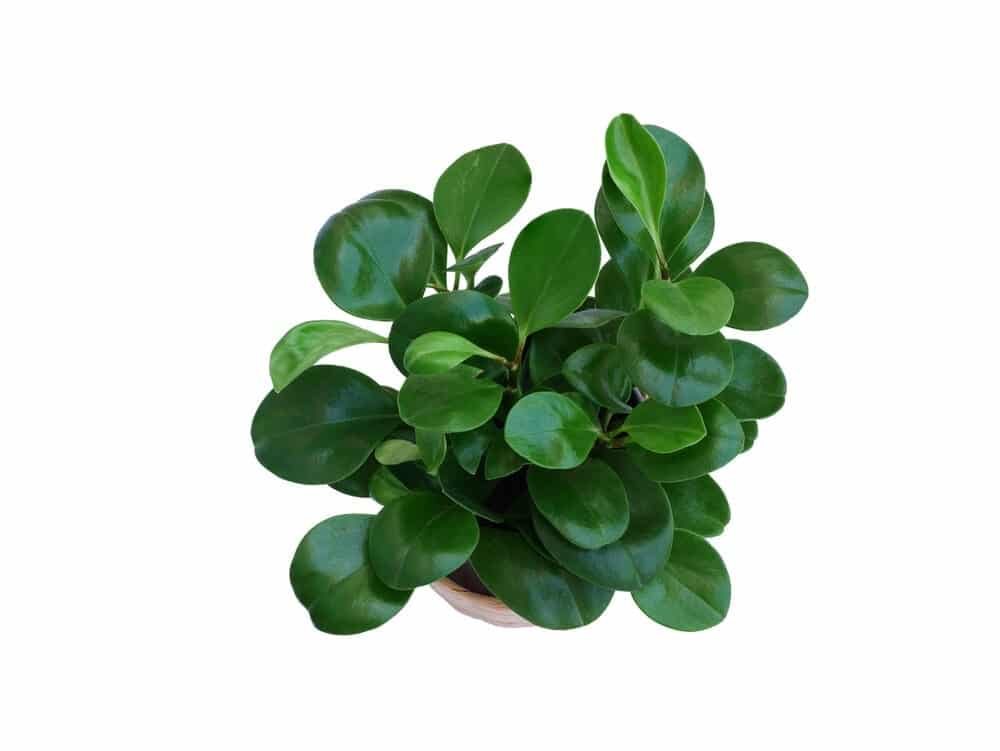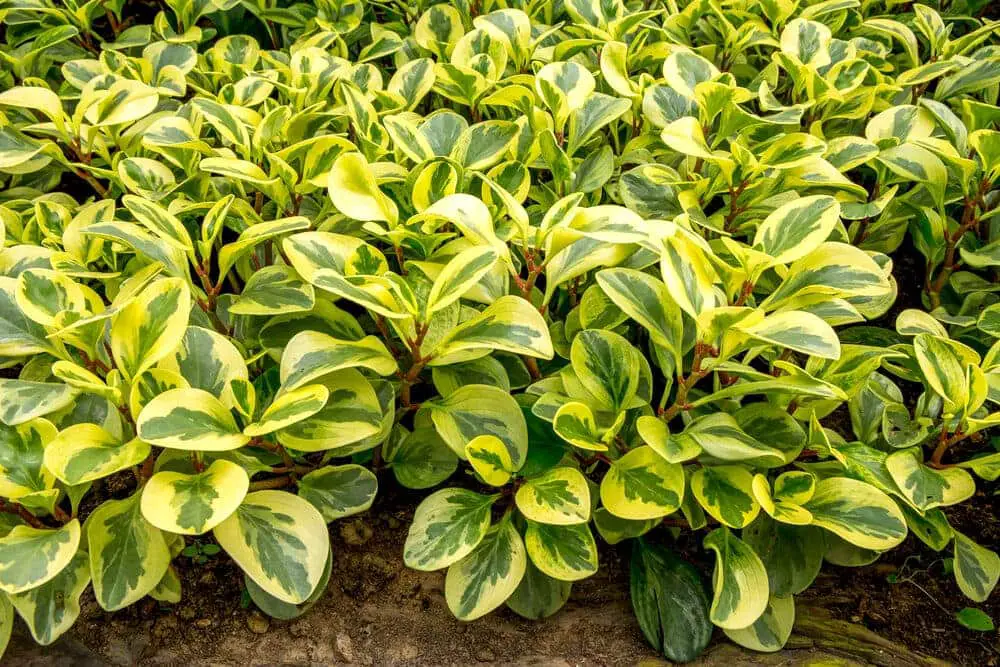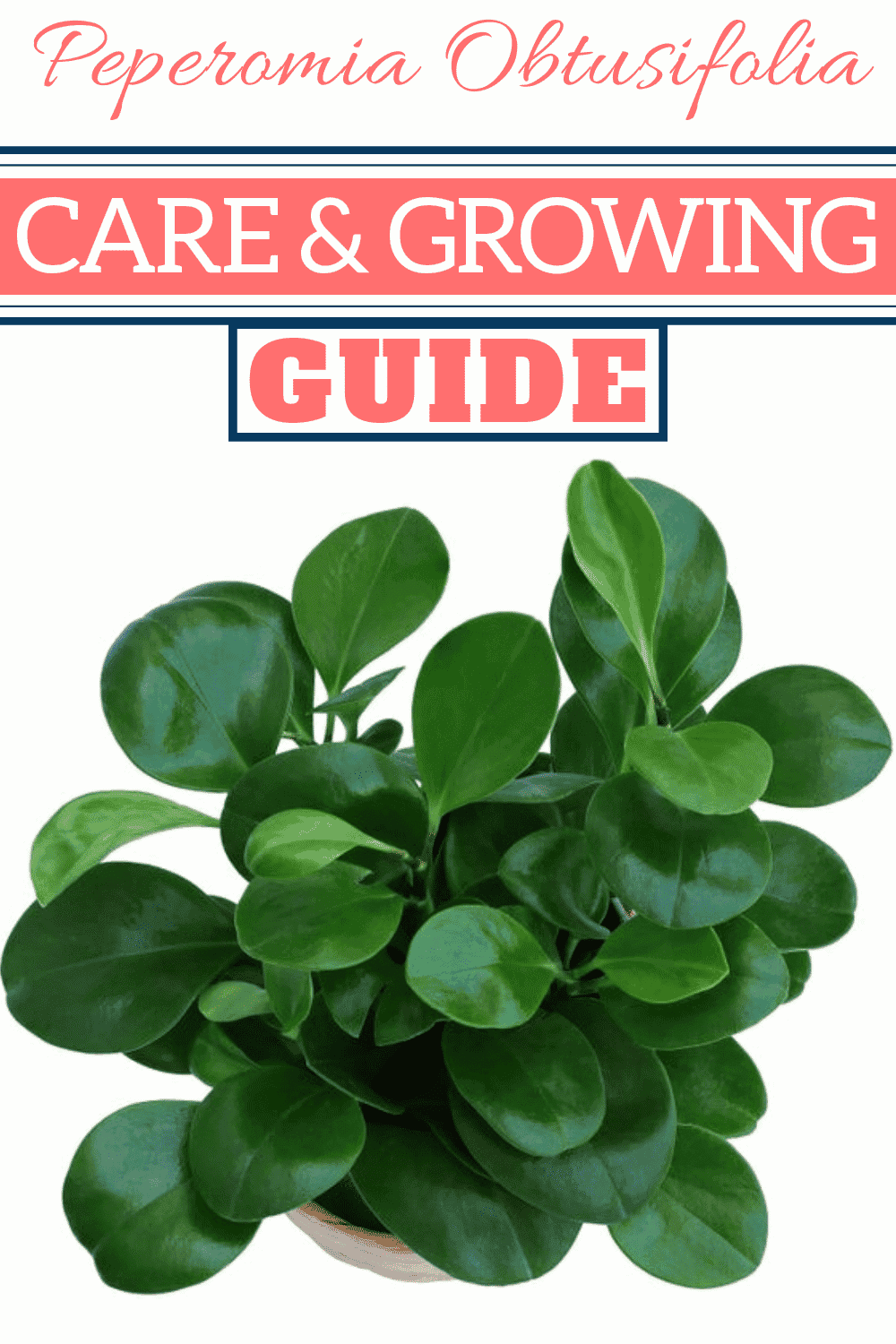Peperomia obtusifolia, which is also known as the American Rubber plant, is a hardy succulent that can decorate any home or garden.
It is low maintenance, and it stores its water in its leaves, that’s why they’re so thick.
Peperomia Obtusifolia Care & Growing Guide
1. Light requirements
Direct, intense sunlight is not ideal for this plant. The best type of light is direct morning light, followed by full indirect light. It also does well under artificial light. If planted in the shade or kept away from indirect light, the peperomia will experience leaf drop as well as faded coloring.
2. Water
Because the peperomia is part of the succulent family, it doesn’t need frequent watering for it to survive and grow. Always check to see in the soil around the plant is dry before you re-water it because it is a desert plant. It is worse to leave it too wet than too dry.
3. Climate
The peperomia loves climate that is warm but humid. It is a topical and desert plant, so moisture in the air is a necessity. You can dry the plant with water if you have a warm house. It can also be at home in a greenhouse, where there are constant heat and humidity.
4. Soil
The best kind of soil for peperomias that are in pots is a soil that is mixed with perlite and peat moss. The soil cannot be clumpy or hold onto water, and it must drain quickly. If it is outdoors, then the soil needs to be chunky enough to allow rainwater to drain and have low acidity.
5. Temperature
Peperomia plants do not do well with temperatures that dip below 30F. It is used to some cold weather, but not snowy or rainy weather. They are mostly tropical plants that love humidity and warm heat.
They can survive hot heat if they’re not in direct sunlight, but they should be kept below 80F.
6. Repotting
Because of the Peperomia’s slow rate of growth, it does not need to be repotted every year. When you do repot them, choose a container that is no more than two inches wider than the pot they were in before.
Furthermore, only repot it when you see the rots coming out from the bottom. Combine its current soil with other soil that is slightly acidic.

7. Speed of Growth
The peperomia doesn’t grow quickly at all. Throughout the entire growing season, you’ll barely see this plant grow up to 12 inches if all of the conditions are right.
Because they don’t experience much growth, they tend to be placed on the windowsill. Cold weather does stunt their growth, so watch out for the temperature wherever the peperomia is placed.
8. Height and spread
This is a relatively small succulent plant. It can grow up to 2 to 2 ½ feet in height, whether it is indoors or outdoors. But this plant usually grows to around one to two feet in height.
It’s spread can differ depending on the rate of trimming, but if it can take a while to grow out. It’s spread is 8-12 inches across, which is great if you want to put it on a desk or table.
9. Flowers
The flowers of the peperomia are small and white and don’t have many nice-looking features. They only appear in the spring until the fall. They grow about 8 inches above the main plant on its stems and vines.
10. Trimming
If this plant is left alone, the leaves and stems will grow in any direction they like. If you want to keep the peperomia trimmed and small, pinch off smaller branches and leaves at the base of their stem.

Is the Peperomia obtusifolia plant poisonous?
No, the peperomia plant is not poisonous to humans or animals. But it should not be eaten, as no part of it is edible. If you do try to eat it, you will experience an extremely bitter taste.
Can Peperomia obtusifolia plants grow in water?
No, the peperomia is a desert plant and will quickly experience fungal diseases, growth stunting, and leaf drop is it’s grown directly in water.
How to get Peperomia obtusifolia plants to flower?
The peperomia plant is not known for its beautiful flowers, and some years they don’t appear at all. So, the best way to make the plant flower is to keep its atmosphere warm and moist with plenty of indirect sunlight. There is no guarantee the flowers will appear.
Common Peperomia obtusifolia Plant Diseases
Peperomias are prone to fungal diseases, especially if they are being watered too often. The most common fungal infection is Ring Spot. This disease can kill the peperomia if not caught in time. You will notice that there is a dark ring across the middle of the leaves as well as leaf curling.
The only way to fight ring spot is to cut away the infected part as soon as you see it. If there is ring spot on multiple leaves, the plant will not survive.
Spider mites sometimes appear on the leaves of the peperomia, especially if the air is hot and humid. You can rinse off the mites with a spray bottle or wipe the leaves with neem oil.
Leaf drop will happen to peperomias that are watered too often—topical plants like water in the air, not in the ground.
Keep reading: Spider Plant (Chlorophytum) Care & Growing Guide
Conclusion
- The Peperomia is a desert and tropical plant and should not be watered too often. Let the soil dry out before re-watering.
- The plant is not poisonous to humans or animals, but it doesn’t taste good either.
- Do no place the peperomia under the direct hot sunlight. Bright indirect sunlight or direct early morning light is best.
- Although it is known as the baby rubber plant, it is not a rubber plant at all. It’s a succulent.
- It first originated in South America.
- It cleans the air in a room and can remove formaldehyde through its leaves.
- You don’t want to add a lot of fertilizer to this plant if it’s in a pot, because the leaves will droop or fall off.
- It does best in hardiness zone 10, 11, and 12.
- It has a second nickname, and it’s “pepper face.”

Victoria is the owner and main author of hobby plants. She loves spending her free time in her garden planting and taking care of her plants. Victoria hopes you enjoy the content here!
![Bush On Fire Croton Plant Care: [Complete Beginner's Guide] Bush On Fire Croton Plant Care: [Complete Beginner's Guide]](https://www.hobbyplants.com/wp-content/uploads/2022/09/bush-on-fire-croton-300x158.jpg)
![Polka Dot Begonia Plant Care: [Complete Beginner's Guide] Polka Dot Begonia Plant Care: [Complete Beginner's Guide]](https://www.hobbyplants.com/wp-content/uploads/2022/09/polka-dot-begonia-care-300x158.jpg)
![Black Pagoda Lipstick Plant: [Complete Care Guide] Black Pagoda Lipstick Plant: [Complete Care Guide]](https://www.hobbyplants.com/wp-content/uploads/2022/09/black-pagoda-lipstick-plant-300x158.jpg)